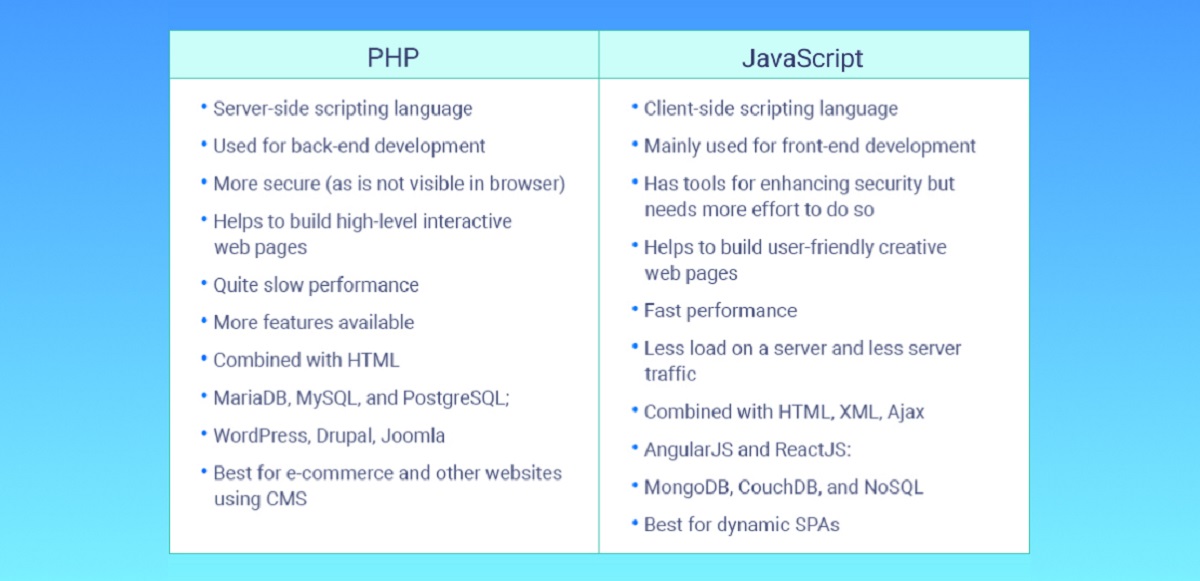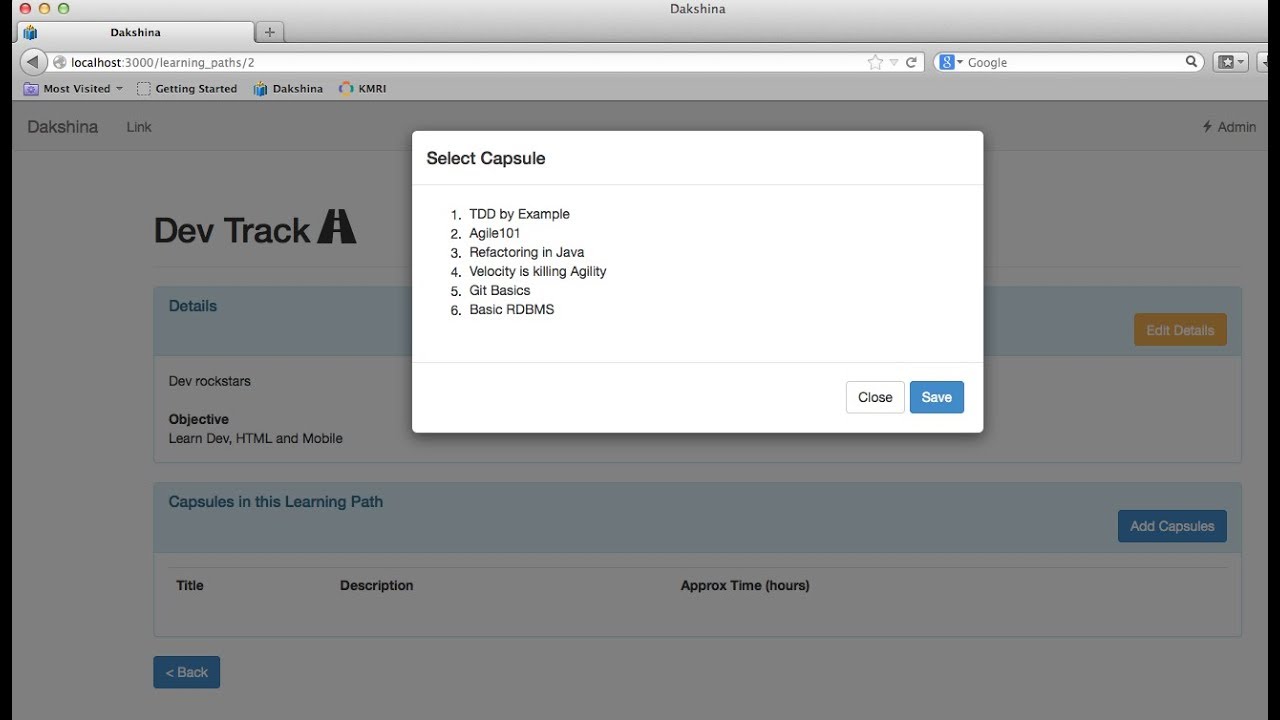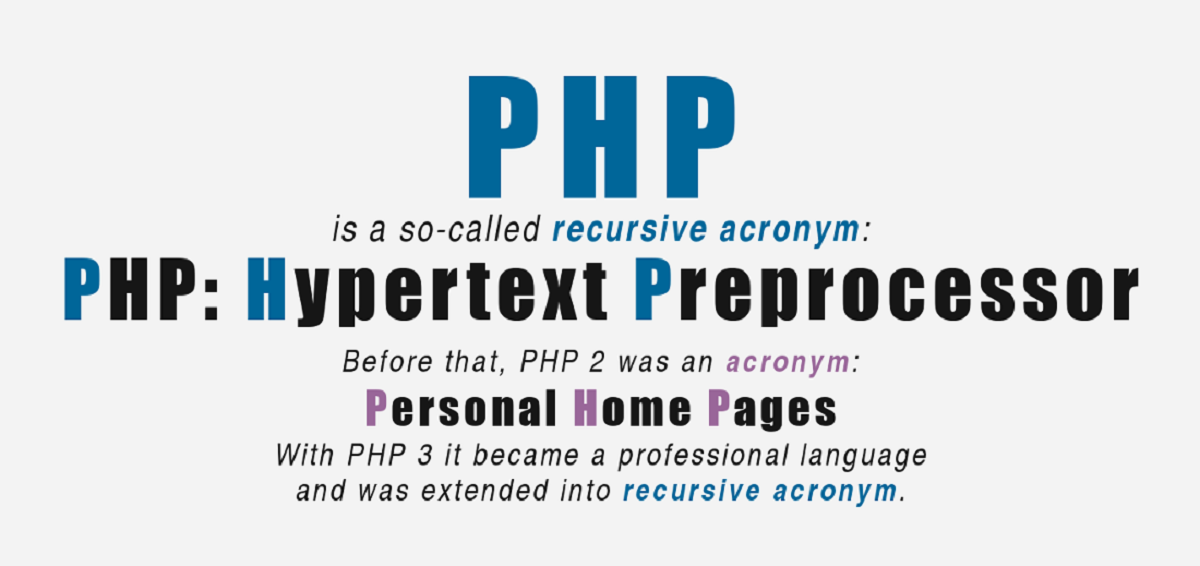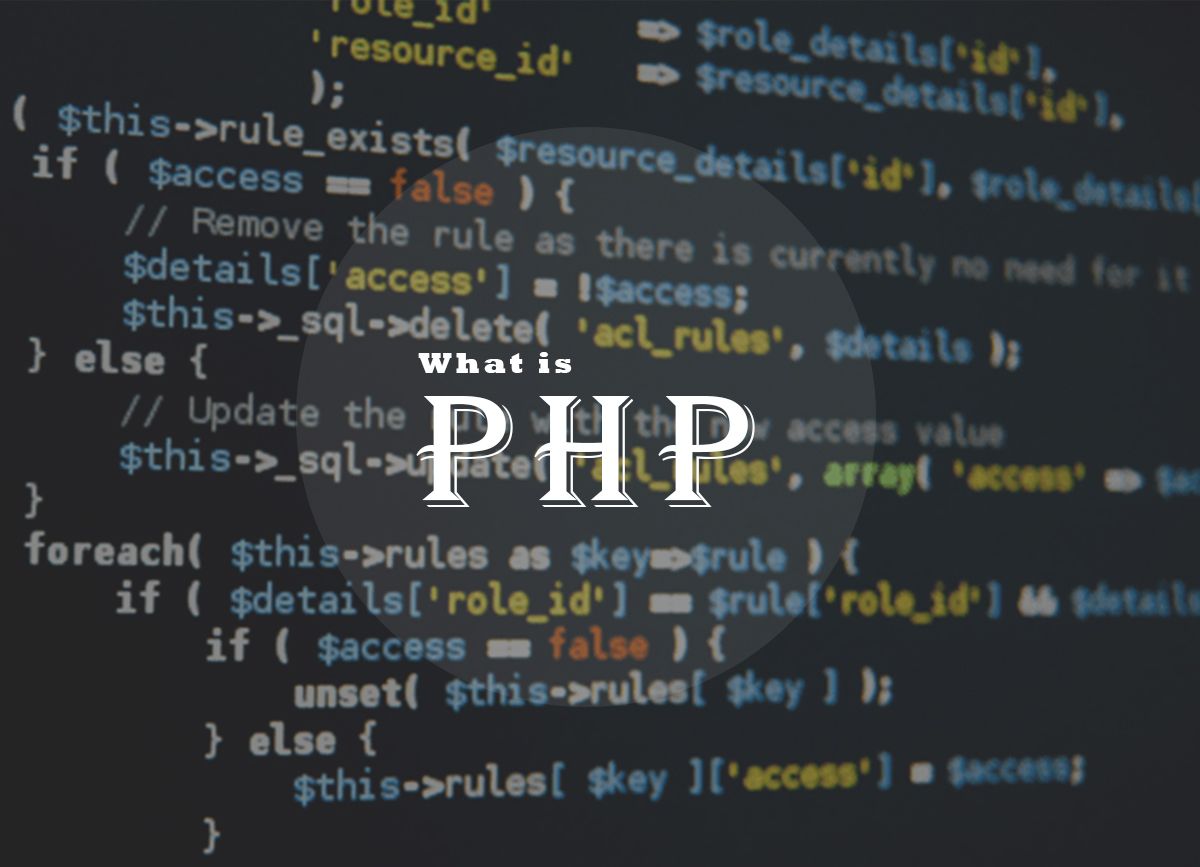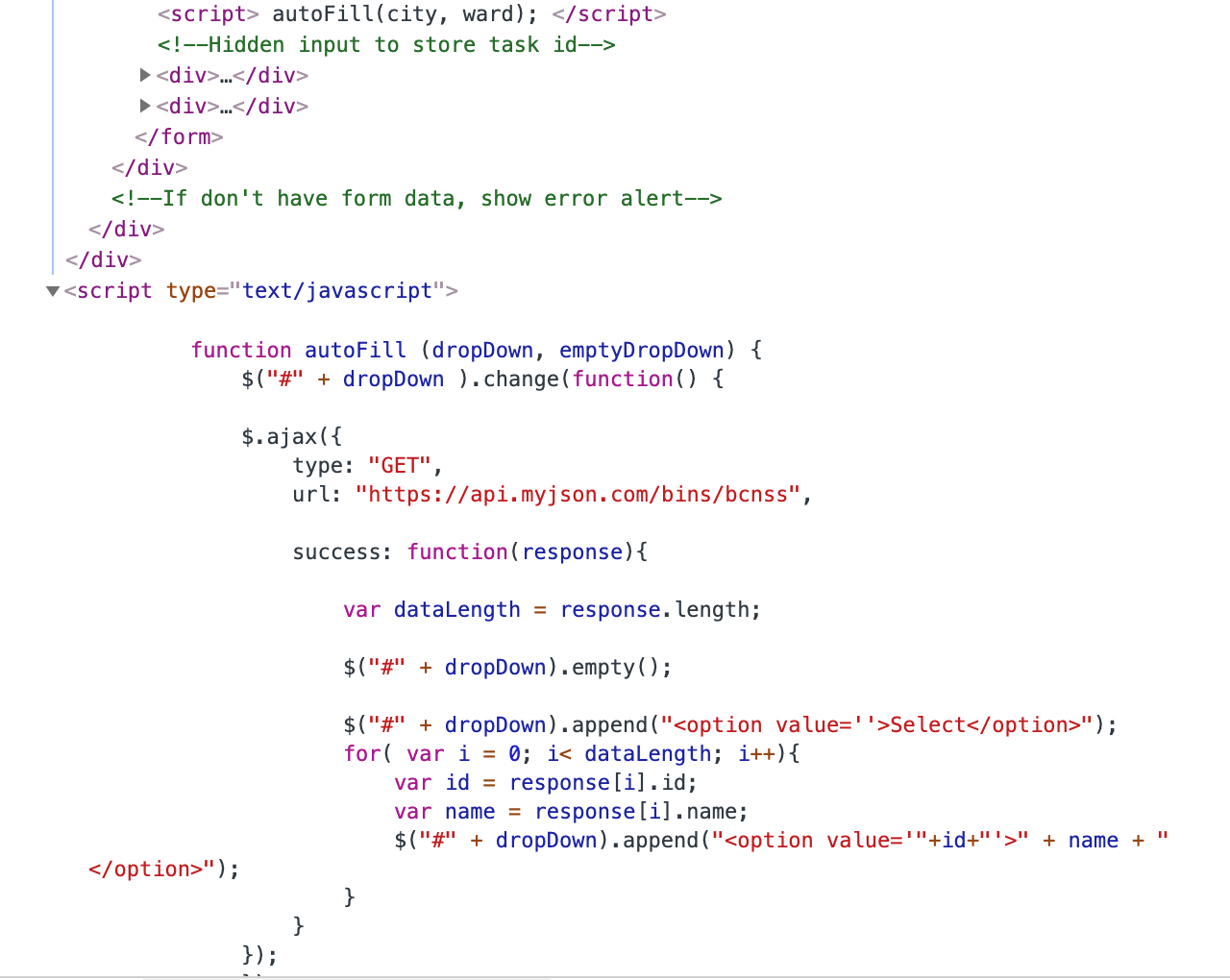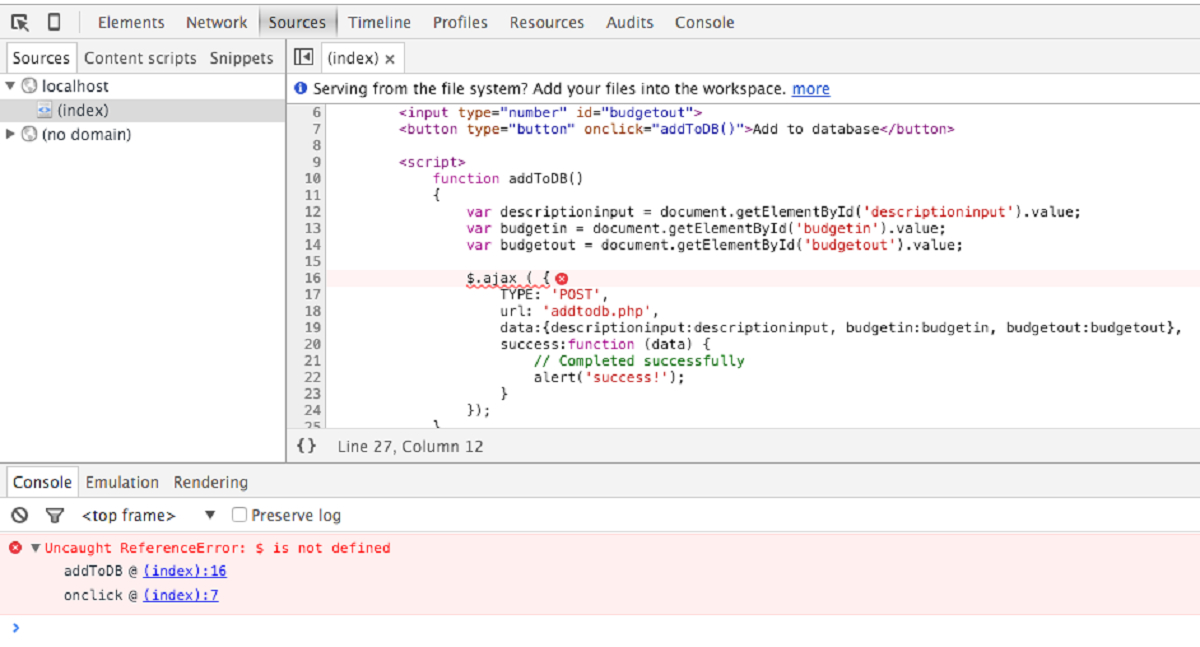Introduction
Welcome to the world of web development! As a developer, you will often come across different programming languages and tools used for creating dynamic and interactive websites. Two popular options in this realm are PHP and JavaScript. Both languages serve distinct purposes and have their own unique advantages.
PHP, which stands for Hypertext Preprocessor, is a server-side programming language primarily used for building the back end of websites. It has been around for decades and has a strong presence in the web development community. On the other hand, JavaScript is a client-side scripting language that runs in the user’s web browser, allowing for interactive website elements and dynamic content.
Understanding when to use PHP versus JavaScript is crucial for web developers as it directly impacts the functionality and performance of their websites. In this article, we will explore the use cases for both PHP and JavaScript, compare their features, and discuss factors to consider when choosing between the two.
Whether you’re a seasoned developer looking to expand your knowledge or a newcomer in the field, gaining insights into the applications of PHP and JavaScript will equip you with the necessary tools to create powerful and engaging websites. So, let’s dive in and explore when to use each language in your web development projects.
Basic Explanation of PHP and JavaScript
Before we delve deeper into their specific use cases, let’s start by understanding the basic concepts and functionalities of PHP and JavaScript.
PHP is a server-side scripting language that is executed on the web server before the web page is sent to the user’s browser. It is primarily used to handle back-end tasks such as querying databases, processing form data, and generating dynamic content. PHP can be embedded directly within HTML code and is known for its simplicity and ease of integration with various databases and frameworks.
JavaScript, on the other hand, is a client-side scripting language that runs directly in the user’s web browser. It is responsible for enhancing the interactivity and responsiveness of web pages. JavaScript allows developers to manipulate the Document Object Model (DOM), handle user interactions, and dynamically update content without refreshing the entire web page.
While both PHP and JavaScript can be used to achieve similar functionalities, their execution environments and purposes differ. PHP is executed on the server and generates HTML that is sent to the client, while JavaScript is executed on the client-side, enhancing the user experience within the browser.
It’s important to note that PHP and JavaScript are not mutually exclusive. In fact, they often work together to create well-rounded and feature-rich web applications. PHP handles the server-side logic and data processing, while JavaScript takes care of the client-side interactivity and user experience.
Now that we have a basic understanding of PHP and JavaScript, let’s explore their specific use cases and understand when it is best to leverage each language in web development projects.
Use Cases for PHP
PHP is a versatile programming language that is widely used in web development for various purposes. Let’s explore some of the key use cases where PHP shines:
- Server-Side Scripting: PHP is primarily designed for server-side scripting, making it ideal for handling server-side functionalities like processing form data, generating dynamic web pages, and interacting with databases. Its ease of integration with popular databases like MySQL and PostgreSQL makes it a popular choice for building dynamic web applications.
- Content Management Systems (CMS): Many popular CMS platforms like WordPress, Drupal, and Joomla are built using PHP. PHP’s flexibility and extensive libraries and frameworks make it a robust choice when developing complex content management systems that require seamless user management, customizable templates, and database integration.
- E-commerce Websites: PHP is widely used in building e-commerce websites due to its ability to handle complex payment gateways, shopping cart functionalities, and secure transaction processing. PHP frameworks like Magento and WooCommerce are specifically designed for building scalable and feature-rich e-commerce platforms.
- Web APIs: PHP can be used to create powerful web APIs that allow applications to communicate and exchange data with each other. By leveraging PHP’s built-in functions and frameworks like Laravel and Symfony, developers can create versatile and secure APIs for various purposes like mobile app integration, third-party service integration, and data synchronization.
- Web Scraping: PHP’s simplicity and flexibility make it a suitable choice for web scraping tasks. Web scraping involves extracting data from websites, and PHP provides libraries and features that facilitate this process. Developers can use PHP libraries like Goutte and Simple HTML DOM to handle web scraping tasks efficiently.
These are just a few examples of the use cases for PHP in web development. PHP’s extensive community support, vast libraries and frameworks, and its ease of use make it a reliable choice for building dynamic, data-driven websites and web applications.
Use Cases for JavaScript
JavaScript is an essential language in modern web development, offering a wide range of applications for creating interactive and dynamic user experiences. Here are some key use cases where JavaScript excels:
- Client-Side Interactivity: JavaScript is primarily used for client-side scripting, allowing developers to enhance the interactivity of web pages without relying on server requests. It enables event handling, DOM manipulation, and real-time updates, making it ideal for creating interactive forms, validating user input, and implementing dynamic UI components.
- Front-End Frameworks: JavaScript powers popular front-end frameworks like React, Angular, and Vue.js, which streamline the development of complex single-page applications (SPAs). These frameworks leverage JavaScript’s capabilities to create reusable UI components, manage state efficiently, and provide a seamless user experience.
- Browser APIs: JavaScript provides access to various browser APIs, allowing developers to manipulate browser features and functionalities. With JavaScript, you can control multimedia elements, implement geolocation services, handle browser storage, and interact with device sensors, offering endless possibilities to create dynamic and personalized web experiences.
- Asynchronous Programming: JavaScript’s asynchronous nature makes it well-suited for tasks that require non-blocking operations, such as handling AJAX requests, fetching data from external APIs, and performing background tasks. Using JavaScript’s built-in Promises or async/await syntax, developers can write efficient and responsive code that doesn’t block the user interface.
- Data Visualization: JavaScript libraries like D3.js and Chart.js enable developers to create stunning visual representations of data on web pages. These libraries provide interactive charts, graphs, and data-driven animations, allowing businesses to present complex data sets in an engaging and user-friendly manner.
JavaScript’s versatility, extensive library ecosystem, and compatibility with modern web browsers make it an indispensable language for client-side development. Its ability to provide interactive user experiences, access browser features and APIs, and power dynamic web applications solidifies its place as a vital component in modern web development projects.
Comparison of PHP and JavaScript
While PHP and JavaScript serve different purposes in web development, comparing their features and characteristics can help determine the appropriate use cases for each language. Let’s explore some key aspects of comparison:
- Execution Environment: PHP executes on the server-side, generating HTML that is sent to the client’s browser. On the other hand, JavaScript runs on the client-side, directly within the user’s browser. This fundamental difference affects how the two languages interact with the server, handle form submissions, and update web page content.
- Language Syntax: PHP and JavaScript have different syntax structures, reflecting their unique purposes. PHP syntax is similar to C-based languages and is designed to work closely with HTML. JavaScript’s syntax is more flexible and expressive, enabling developers to manipulate the DOM, write event-driven code, and work with objects and functions in a more dynamic manner.
- Data Handling: PHP has built-in functionalities to interact with databases, making it well-suited for handling server-side data processing, querying, and CRUD operations. JavaScript, on the other hand, focuses on manipulating data within the browser, enabling real-time updates, performing client-side validation, and working with data fetched from APIs.
- Community and Ecosystem: Both PHP and JavaScript have vibrant and extensive communities, offering a wide array of frameworks, libraries, and resources. PHP has frameworks like Laravel and CodeIgniter, whereas JavaScript boasts frameworks such as React, Angular, and Express.js. The availability of community support and documentation can significantly impact the ease of development and overall productivity.
- Performance: Both PHP and JavaScript have evolved to improve performance over the years. PHP’s server-side execution can handle heavy server-side processing efficiently, while JavaScript’s advancements, such as the V8 engine, have significantly improved its performance in the browser. However, it’s important to note that performance can vary depending on specific use cases and optimizations implemented.
Ultimately, the choice between PHP and JavaScript depends on the requirements of your web development project. PHP is a go-to choice for server-side processing, database integration, and back-end development, while JavaScript shines in creating interactive user experiences, manipulating data within the browser, and building complex front-end applications.
It’s worth mentioning that many modern web applications utilize both PHP and JavaScript together. PHP handles server-side tasks, data storage, and business logic, while JavaScript powers client-side interactions, real-time updates, and dynamic user experiences. Understanding the strengths and use cases of both languages allows developers to make informed decisions when architecting and implementing their web development projects.
Factors to Consider When Choosing Between PHP and JavaScript
When deciding between PHP and JavaScript for your web development project, several factors should be taken into consideration. These factors can help you determine which language is best suited for your specific needs. Let’s explore some key considerations:
- Server-Side vs Client-Side: Consider whether you need server-side processing or client-side interactivity. If your project requires extensive server-side functionalities, database integration, or content management, PHP is a strong contender. On the other hand, if you prioritize interactive user experiences, real-time updates, and manipulating data within the browser, JavaScript is the language to go for.
- Existing Infrastructure and Skills: Assess the existing infrastructure and skill set within your development team. If you have a well-established PHP environment, with experienced PHP developers and robust server-side tools, it may be more efficient to leverage PHP for your project. Conversely, if your team is more proficient in JavaScript, or you’re working on a front-end-heavy project, focusing on JavaScript may yield better results.
- Specific Project Requirements: Evaluate the specific requirements of your project. Consider factors such as scalability, performance, security, and integration with third-party services. PHP has a wide range of frameworks and libraries tailored for specific use cases, such as e-commerce websites or content management systems. JavaScript offers a vast ecosystem of front-end frameworks and libraries for building interactive and responsive web applications.
- Collaboration and Community Support: Take into account the collaboration and community support available for each language. PHP has a long-standing community and extensive documentation, making it easier to find solutions and troubleshoot issues. JavaScript, being the language of the web, has a large and active community and numerous open-source projects, which can provide valuable resources and support for your development process.
- Long-Term Maintenance: Consider the long-term maintenance and future development of your project. Evaluate factors such as code maintainability, ease of adding new features, and the availability of resources and updates. Both PHP and JavaScript have evolved over time, but the choice should be guided by the language that aligns well with your project’s roadmap and long-term goals.
By carefully considering these factors, you can make an informed decision about whether PHP or JavaScript is the right choice for your web development project. Remember that there is no one-size-fits-all answer, and the best approach is to assess your specific requirements, team capabilities, and project goals to determine the most suitable language to achieve success.
Conclusion
Choosing between PHP and JavaScript for your web development projects is a decision that should be based on various factors, including the specific requirements of your project, the existing infrastructure and skillset of your team, and the desired user experience. Both PHP and JavaScript have their own unique strengths and use cases, and understanding these can greatly impact the success of your projects.
PHP is a robust server-side language, well-suited for handling back-end processing, database integration, and content management. It excels in tasks that require server-side scripting and accessing databases, making it a popular choice for content management systems, e-commerce websites, and web APIs.
JavaScript, on the other hand, is a client-side scripting language that runs directly in the user’s browser. It enables interactive user experiences, real-time updates, and dynamic content manipulation, making it ideal for creating engaging front-end applications, implementing client-side interactivity, and working with browser APIs.
It’s essential to consider factors such as project requirements, existing infrastructure, collaboration and community support, and long-term maintenance when choosing between PHP and JavaScript. Assessing these factors will enable you to make an informed decision that aligns with your project’s goals and ensures a seamless development process.
In many cases, the best approach is to leverage both PHP and JavaScript together. PHP handles server-side processing and data management, while JavaScript enhances the user experience on the client-side. This dynamic combination offers the best of both worlds, allowing you to create powerful, interactive, and feature-rich web applications.
Regardless of your choice, both PHP and JavaScript are widely used and supported by vibrant developer communities. Continuously developing your skills and staying up to date with the latest trends and advancements in both languages will ensure your ability to create innovative and impactful websites and applications.
So, whether you’re building a dynamic e-commerce platform, creating an interactive web application, or developing a content management system, carefully considering the use cases and strengths of PHP and JavaScript will empower you to deliver exceptional user experiences and achieve success in your web development projects.







